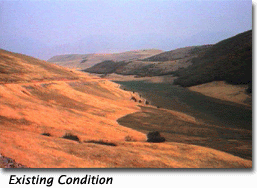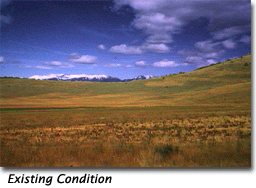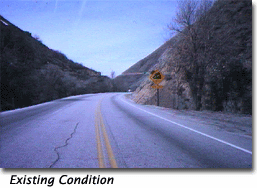
|
Connecting Brigham City and Logan, Utah, this northern Utah highway project was designed to improve traffic flow on US Highway 89/91. The existing two lane road was insufficient for the volume of traffic. The project received major funding from the federal government, therefore a full scale environmental impact statement (EIS) was required. Two major alternatives were considered, widening of the existing route and a new alignment. The visual simulations illustrate the range of cut and fill and related highway construction activities. Revegetation proposals are also shown.   The major visual simulation issue was bias. The public was very concerned that what they saw in the visual simulations represented what was actually being proposed, therefore a great deal of time and careful attention was invested to ensure that the visual simulations were credible. This project illustrates another challenge to avoiding bias. When the EIS was undertaken, the alternative designs were very preliminary, therefore credible visual simulations had to be based on "sketchy" design information. A series of public meetings with careful explanations were required.   EALA's work added value to the Wellsville Canyon Highway project in the following ways...
|
Home | Services | Projects | J. Ellsworth | FAQ's | Contact | Site Map
![]()
All text and images copyright © 2005 Ellsworth and Associates, landscape architects,
inc. All rights reserved.
